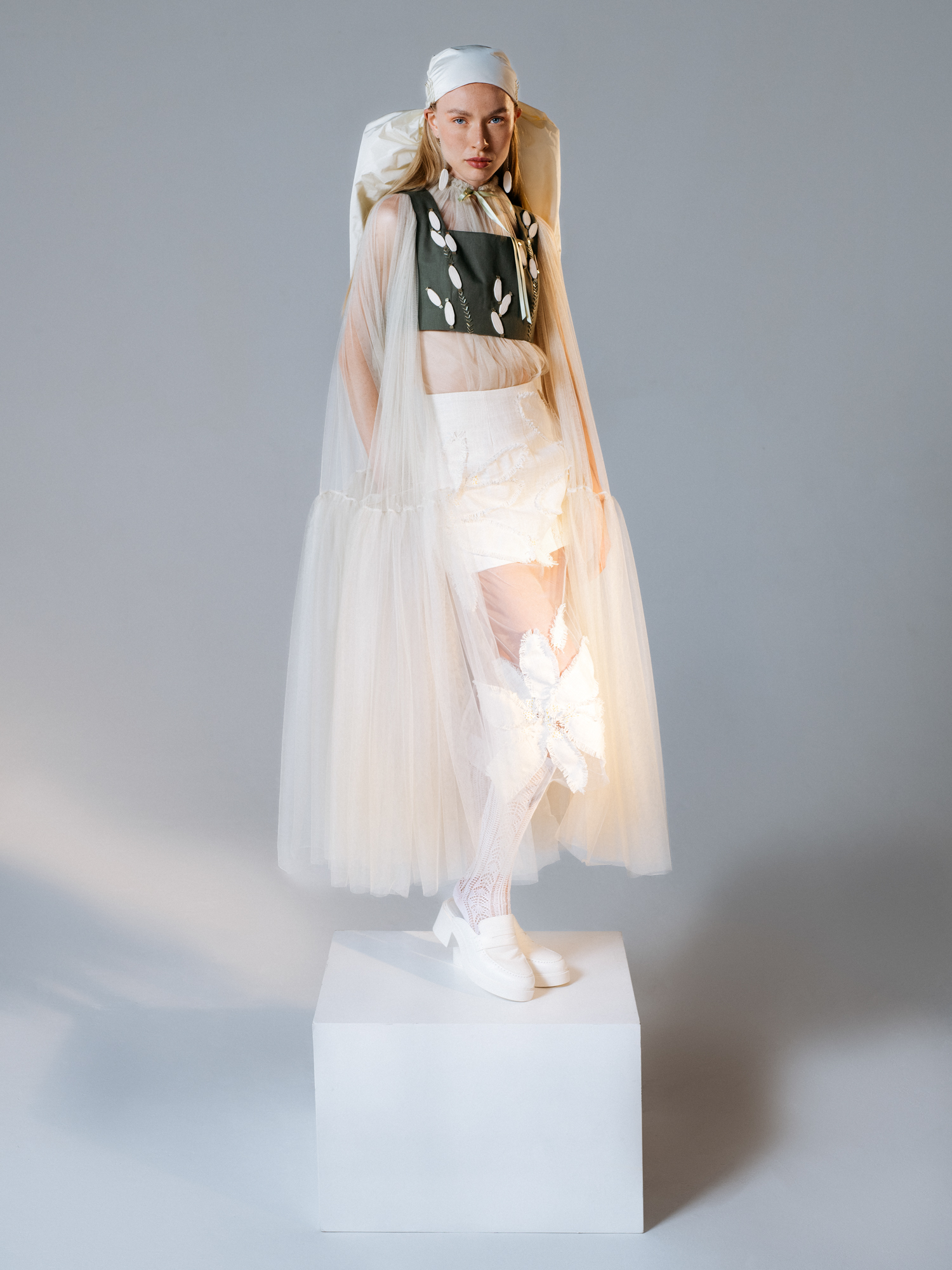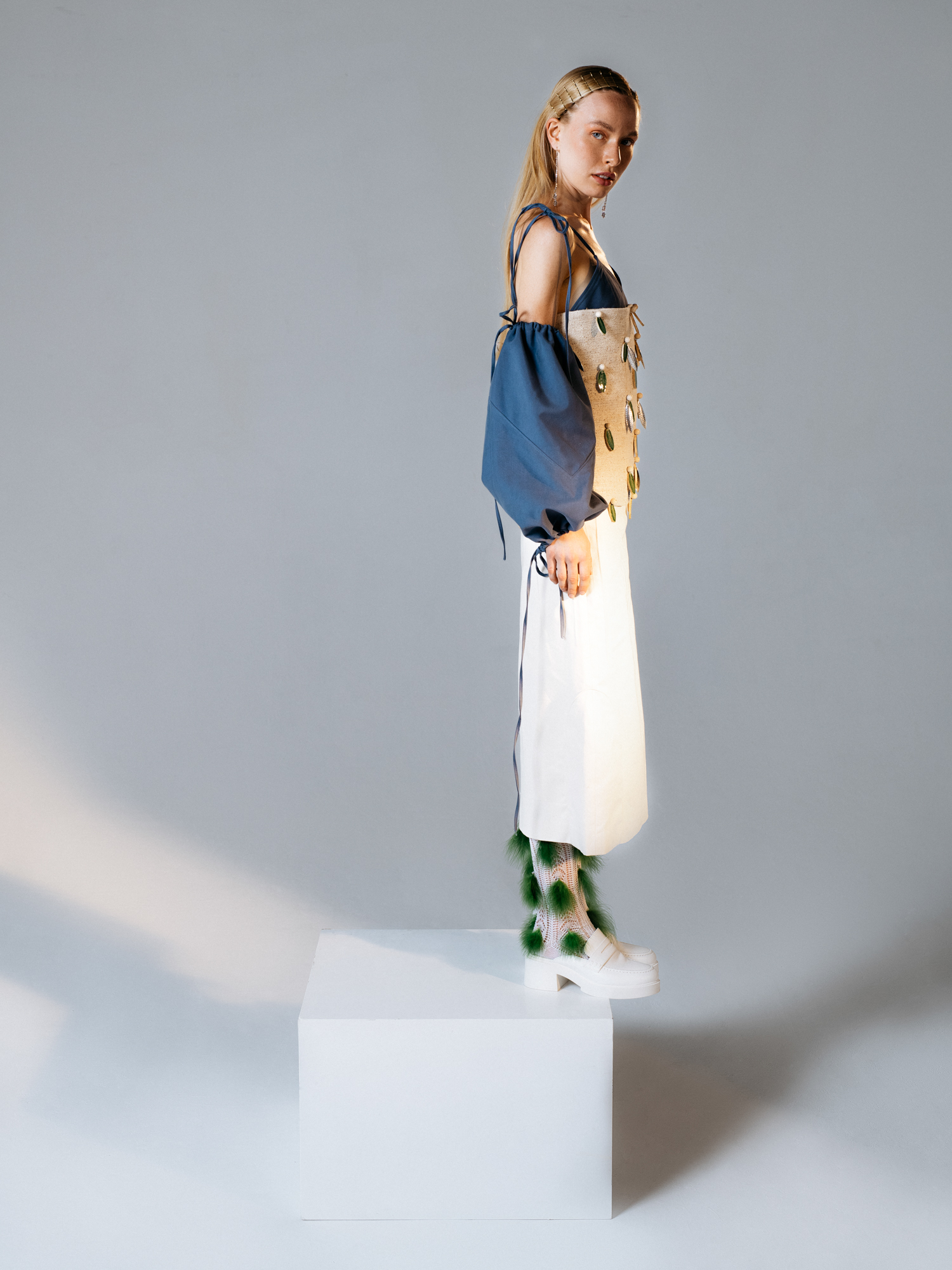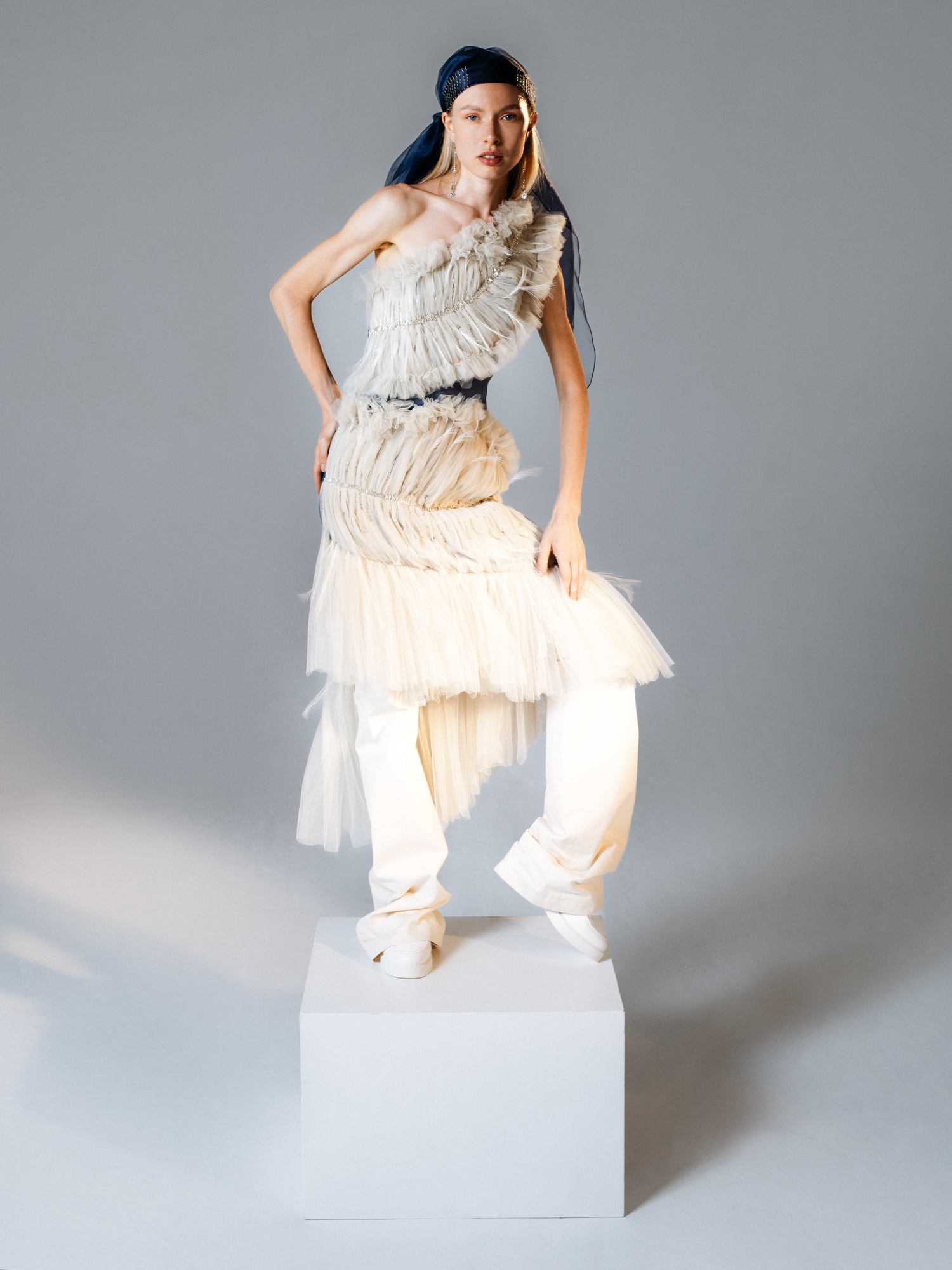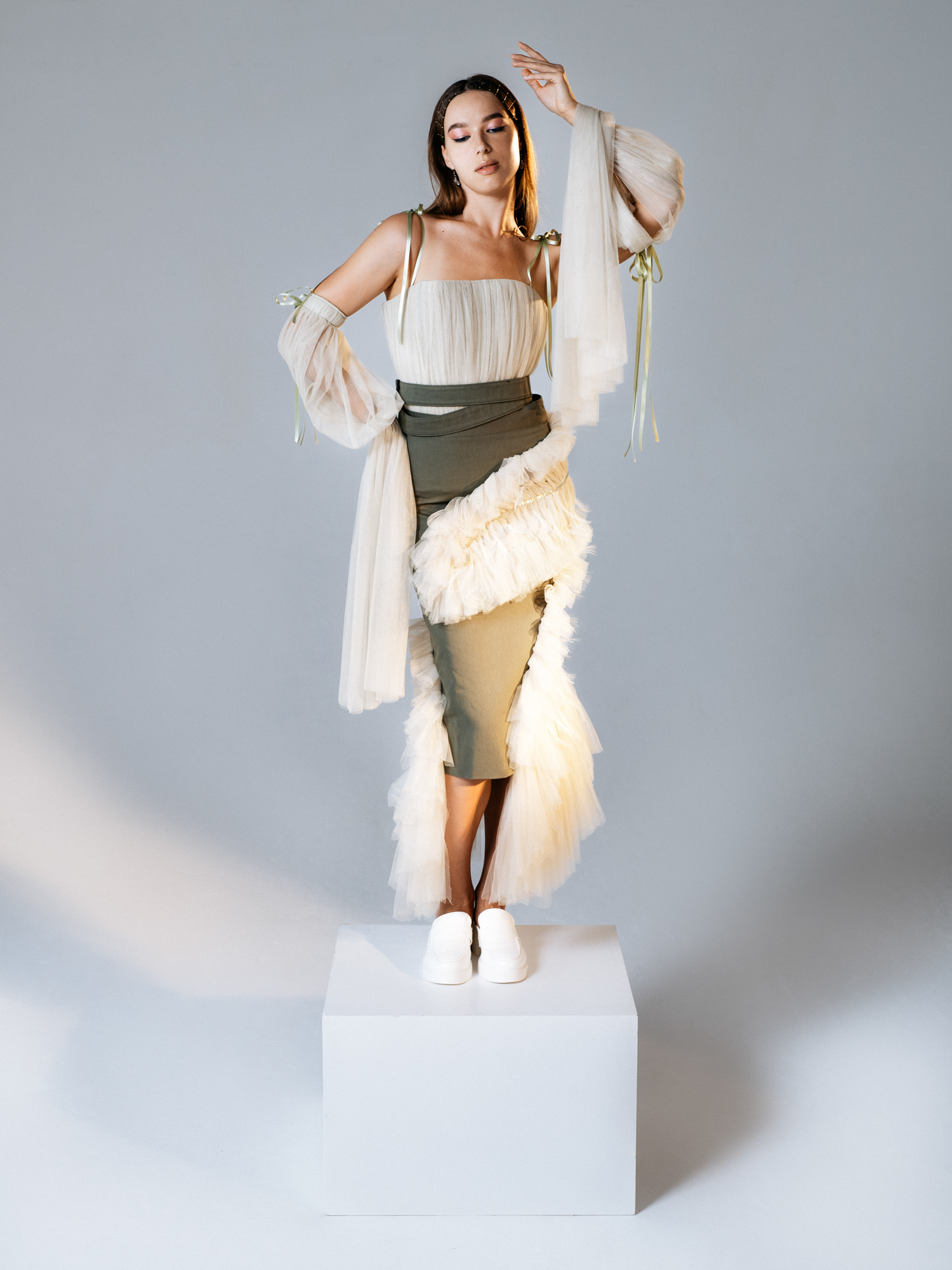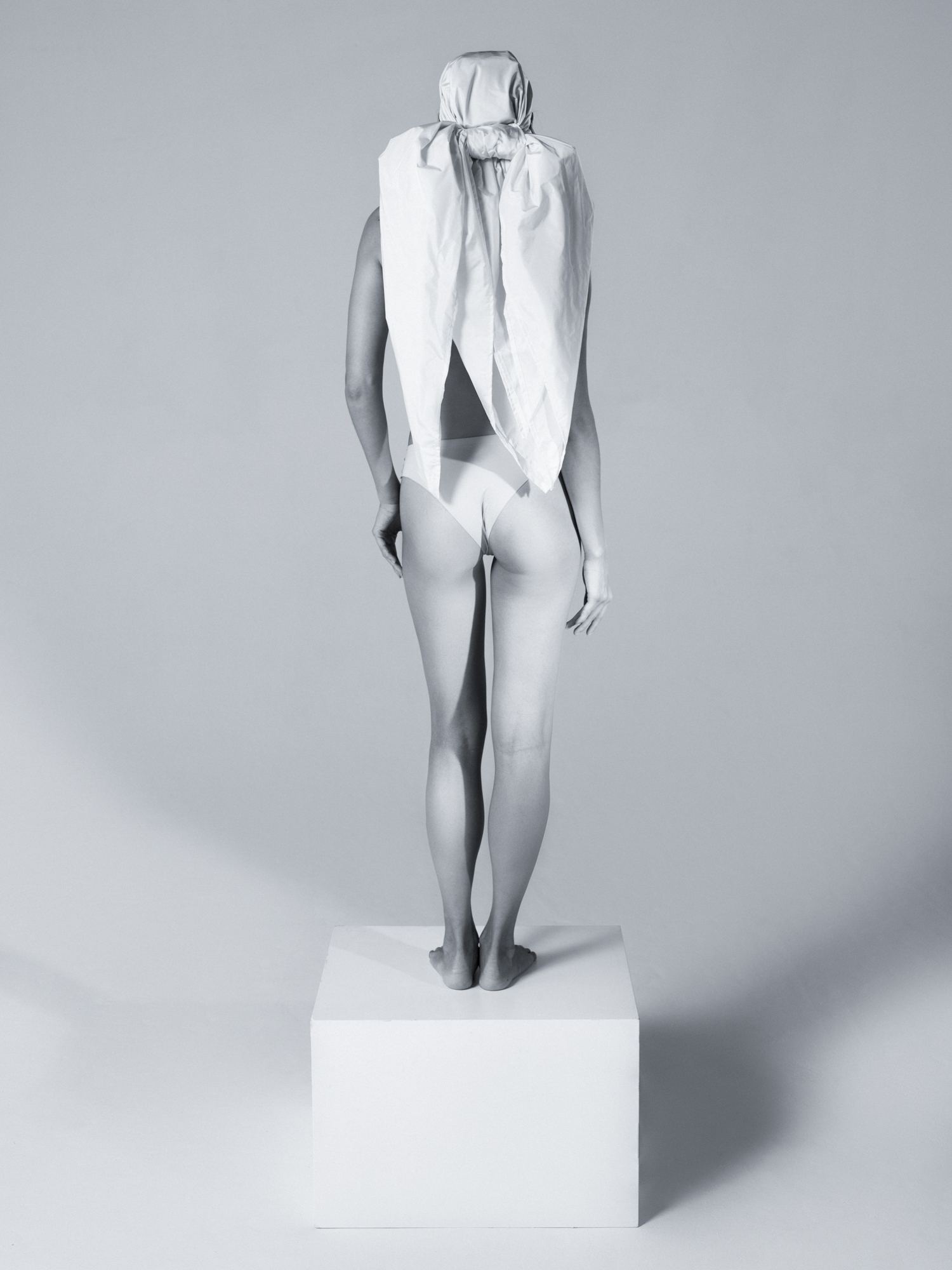by Cosimo Baldi
In a world where the concept of simplicity seems to have been demonized, designers like Lukas Christ remind us that ‘minimal’ and ‘minimalist’ are two very distinct and different concepts.
What academic/work background led you to found your personal brand here in Italy?
“I moved to Milan five years ago from Austria. After two years, I started working for Cavallini as an Assistant Designer and later, after university, I joined Gucci in Rome to work in the knitwear department. I then returned to Milan, where I currently work for a showroom, sometimes collaborating with other designers.”
What motivated you to return to Milan?
“The fact that it’s a very “international” city; the fashion environment is incredibly stimulating. It’s easy to build a network, and the mix of realities it encompasses is definitely intriguing. It allowed me to build my brand practically from scratch.”
What are the ideas and values behind your brand?
“Lukas Christ is a brand dedicated to redefining women’s fashion in a sustainable way, combining simplicity with a bohemian style. I strongly believe in the power of simplicity; my goal is to create a minimalist brand where sustainability is not just a trend but an integral part of the concept. All my pieces are made from deadstock materials, which mean its all originated from discarded fabrics. Reclaimed materials make up 90% of my collection, with the remaining 10% being all cotton or natural fibers, and all the pieces are meticulously crafted by skilled artisans in Italy, ensuring the highest standards of quality and attention to detail. My debut collection for Spring/Summer 2025 is a testament to my professional philosophy. Every piece exudes effortless elegance and timeless style. From flowing dresses to tailored suits, our collection offers versatile garments that allow women to express their individuality with confidence.”
The aspect of sustainability seems very important to you.
“Many people are “intimidated” by something labeled as “reclaimed,” but honestly, I always strive to ensure that what I create is both accessible and marketable and appears as new as possible. Using recycled materials does not detract from the original design, which still aims to create something new.”
What did it mean for you to leave your country to pursue your ambitions?
“When you come from abroad and know that you grew up in a more modest environment compared to your university peers, in addition to the language barrier, it can be more challenging to find work afterward. But this has always motivated me to keep pushing forward, to keep working and learning. In a way, I consider myself a workaholic, so I never stop.”
When you start creating a collection, what inspires you?
“I always manage to draw some ideas from Austria. I don’t consider myself particularly patriotic; I now feel more “Mediterranean,” but Austria has a long tradition of craftsmanship and costume techniques that no longer exist but are important to revalue. I usually like to develop my concepts by using the forms and folklore typical of my country and blending them with everything I’ve learned here in Italy. For fabrics, I prefer materials like linen and silk. I also enjoy playing with concepts of masculinity and femininity—I can take something oversized and put it on a woman. In that sense, I love to explore and don’t feel limited by the concept of gender.”
What excites you most about the creative process?
“When I see the dress or garment finished for the first time, and also the subsequent selection of models, seeing that your piece is ageless and can be worn by anyone is an indescribable emotion. I also enjoy collaborating with other designers; I think you can always learn a lot from other people’s life experiences. Working in fashion is not like working in an office where everything is always the same and never changes—the creative process is constantly evolving, and for me, it’s a great satisfaction to be able to exchange ideas with others in the industry.”
You’ve mentioned working closely with other designers. How important is teamwork in fashion?
“For me, it’s very important. In a team, it’s essential to help each other, and this can always help us grow. Sometimes it also allows us to venture beyond our usual areas of expertise. I’ve found myself collaborating with people who design streetwear, others who work in sportswear, etc. It’s all about give and take. From a personal standpoint, I’m like a sponge—I absorb everything people tell me to enrich my mind, and I always hope others do the same when I share my experiences.”
“Transalpina,” his collection presented at the Fashion Graduate 2022, tells the beauty and power of the alpine life through a series of garments that blend tradition and modernity, rigor and fluidity. Christ has captured the essence of these mountains, translating it into a clothing line that plays with chromatic contrasts, refined textures, and extremely well-crafted sartorial details.
Transalpina is the essence of craftsmanship and my couture left in the Austrian countryside. For centuries, women have practiced the same craft in the Alps and valleys. Some may forget, but the legacy continues to be carried on. I try to give these forgotten crafts, the silhouettes, and above all their meaning, a new vision. Transalpina is dedicated to the women in Austria who were and still are the keepers of traditions. However, I am showing this collection through a filter that is my experience with culture and giving it another dimension. I take and use what has been present for a long time and reform it. The modern masculine silhouettes cut from feminine shapes are a contrast that opposes the contrast of durable fabrics with delicate embroidery and ornaments. Giving the hard work, comparable to couture, the perspective to show the rigidity and power of these women who create it without sacrificing their importance in appearance or ease.
This is nature, this is history, and the women who are part of it. It is an essence and a state of mind that I discovered in my alter ego of TRANSALPINA.” declared the designer about his project.
The collection stands out for its ability to maintain a deep bond of respect between tailoring tradition and eco-sustainable materials. Each garment reflects Lukas’ desire to explore new stylistic territories, without ever losing sight of the importance of detail and quality.
The first outfit is also a composition in cream-colored tulle that, with its asymmetrical ruffles, wraps the figure in a play of volumes and transparencies. The delicately cut bodice is completed by wide, light sleeves that flutter with every movement. The skirt, fitted and structured, features an overlay of fabrics that creates a fascinating contrast between the fragility of the tulle and the solidity of the sartorial construction. A look that speaks of strength and delicacy in equal measure.
The second look in this collection features a short blazer with a back slit and ribbon, worn over a mini dress with porcelain decorations and cord closure on the sides. Embroidered socks with ostrich feathers complete the ensemble. The mini dress, made of light fabric, is adorned with circular metal decorations that catch the light, creating a captivating play of reflections. The jacket is paired with wide white trousers, made unique by the inclusion of multicolored feathers emerging from the hem, adding a touch of extravagance to the look. The white shoes, with a minimal design, balance the entire outfit, emphasizing Lukas’ philosophy of combining simplicity with decorative richness.
The third look is a true manifesto of Lukas Christ’s romantic modernity. A dark green bodice, decorated with porcelain elements reminiscent of petals, is paired with a white tulle skirt with ruffles that fall to the knee. The entire outfit is wrapped in a white tulle cape that creates an ethereal, almost celestial effect. The decorated socks and white shoes add a final touch of refinement, completing a look that is both modern and timeless.
The fourth piece presented by Lukas Christ is a one-shoulder dress made entirely of white tulle embroidered with sequins and feathers. The soft, fluid folds of the fabric follow the natural lines of the body, accentuating femininity with grace. The final effect is that of a dress that seems suspended between dream and reality, with a visual lightness that conceals complex sartorial mastery. Beneath the midi dress are high-waisted jeans in 70s style.
The fifth look features a long navy blue coat with lace-up details running along the sides, adding an element of dynamism and mystery. This piece, with its classic, clean cut, represents the quintessence of modern sophistication, ideal for those who desire a look that conveys authority without sacrificing refinement. The gray scarf that wraps part of the head is a clear reference to Alpine traditions, reinterpreted in a contemporary key. Hidden under the coat are a linen shirt with ribbon on the back, a high collar, and feather and raffia embroidery, straight chiffon trousers with a drawstring and fringes at the bottom. The look is completed by edelweiss drop earrings and a traditional Greek linen headdress.
The sixth and final look of the “Transalpina” collection is an explosion of creativity. An innovatively cut shirt, with wide blue sleeves tied with thin ribbons, is paired with a long, fitted white skirt. The upper part is enriched with a vegan silk corset with porcelain embellishments, giving the look a touch of natural elegance. The feather-adorned socks, which almost resemble leggings, demonstrate how Lukas knows how to play with details to create something truly unique.
Lukas Christ teaches us that true beauty lies in simplicity, and that it’s not necessary to resort to excessive silhouettes or prominent details to tell a story that resonates deeply. His creations, despite their apparent simplicity, are an example of how sartorial mastery and meticulous attention to detail can transform the minimal into the extraordinary. Every fold, every seam, every fabric choice reflects a deep respect for his heritage and an almost sacred attention to craftsmanship.
Lukas doesn’t need gimmicks to captivate; his talent lies in capturing the essence of things and expressing it through garments that, despite their simplicity, carry a wealth of meaning and cultural heritage. It is this unique ability to blend tradition with innovation, discretion with elegance, that makes Lukas Christ a designer destined to leave an indelible mark on the world of fashion.
In an era where fashion often tends to be overly loud and ostentatious, Lukas reminds us that true refinement is found in tranquility, in sobriety, and in respect for the past. Through his creations, he demonstrates that telling a story can require only a few elements, provided they are chosen with intelligence and assembled with love. And in this, Lukas Christ excels, elevating simplicity to a form of sublime art.
Lukas’ collections are available and visible on the Alef Lab website, which we enthusiastically invite you to visit to discover his current collections and stay updated on the upcoming creations of a promising designer whose story is only just beginning.
